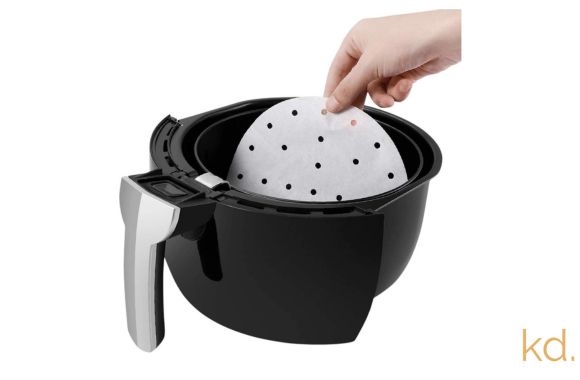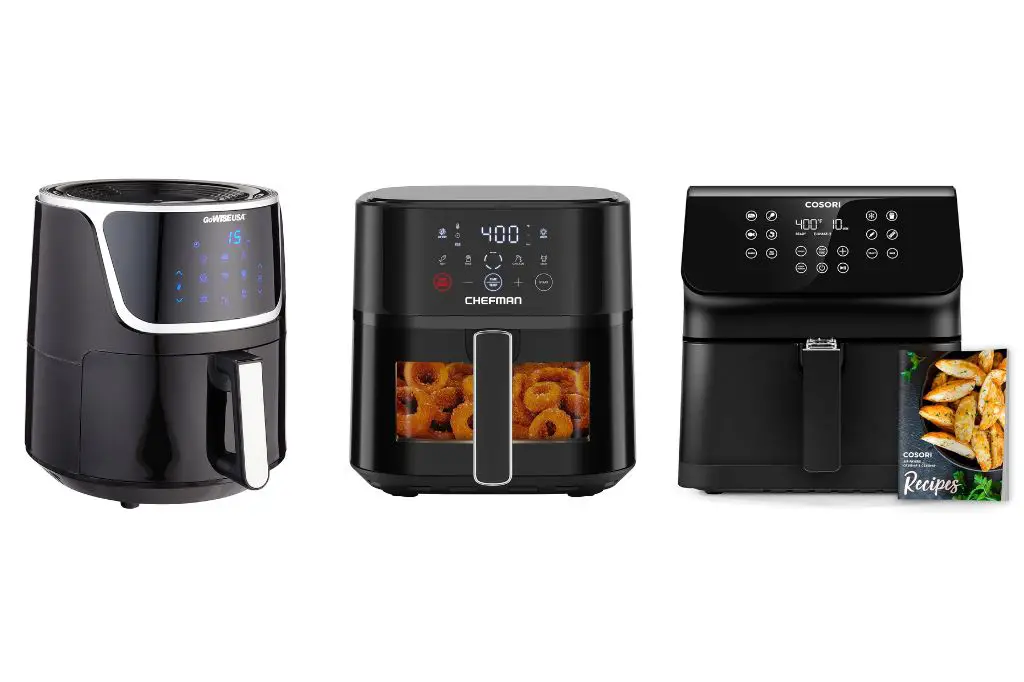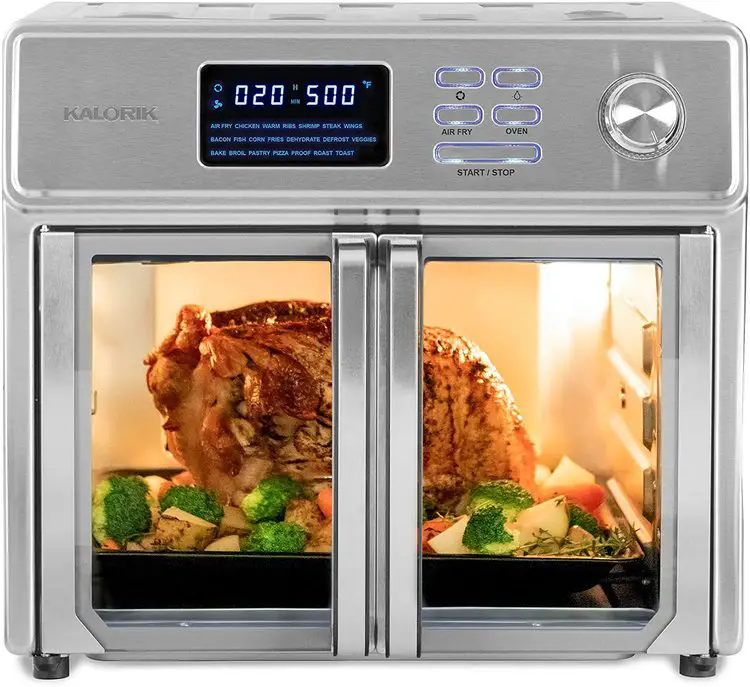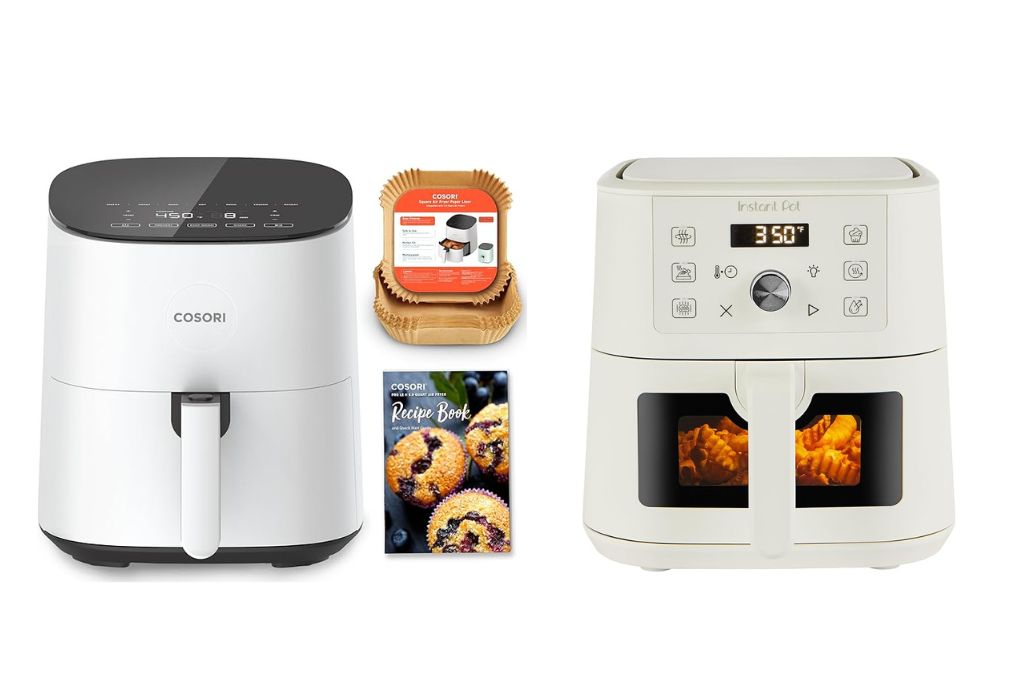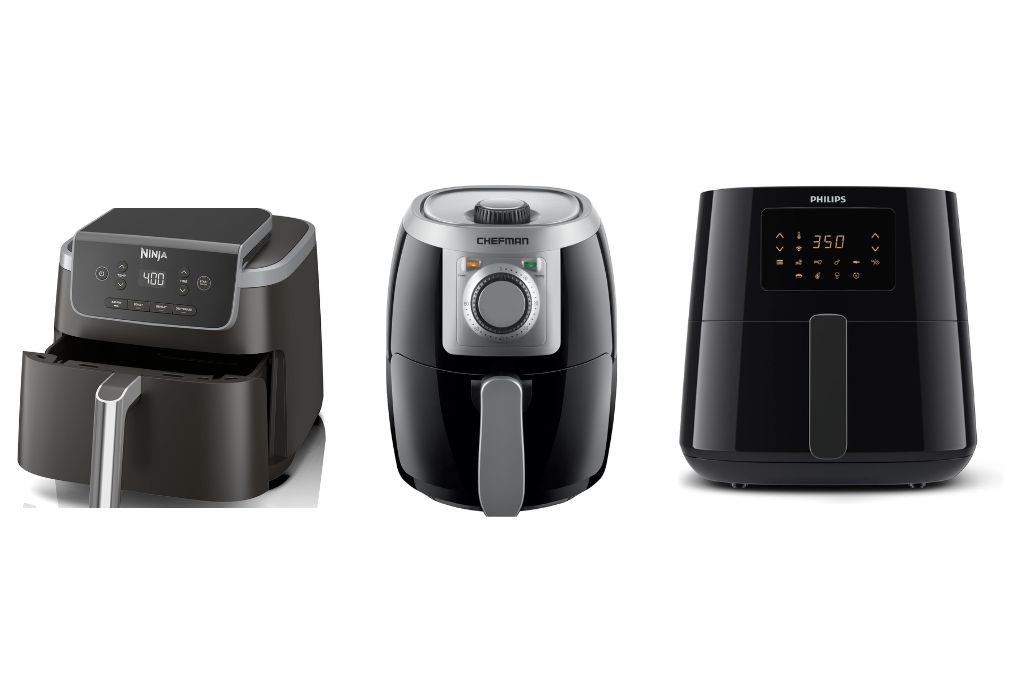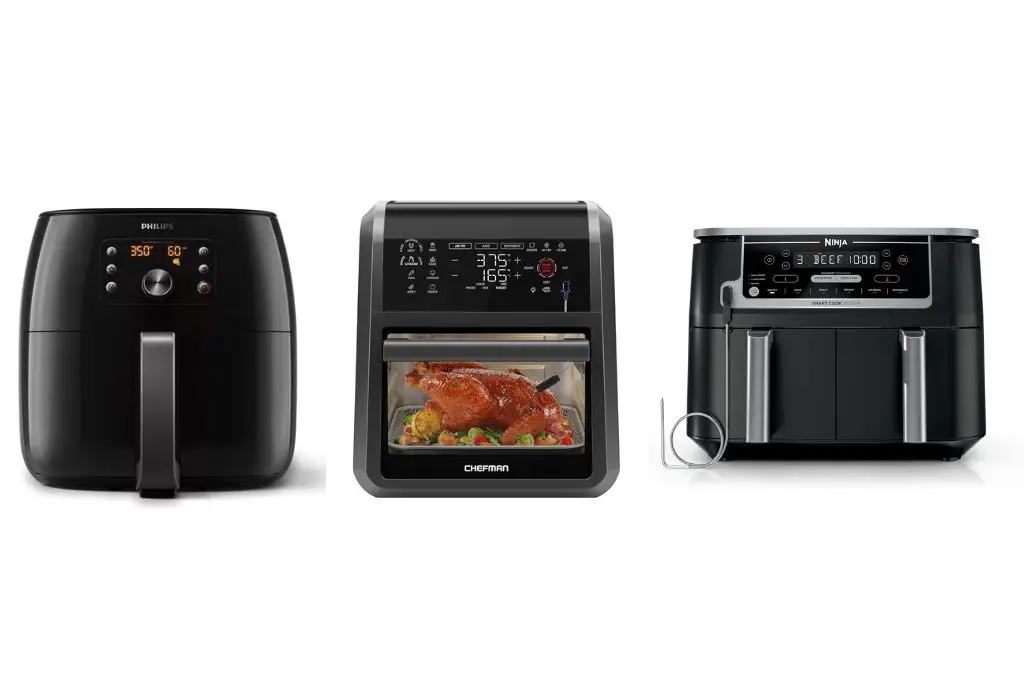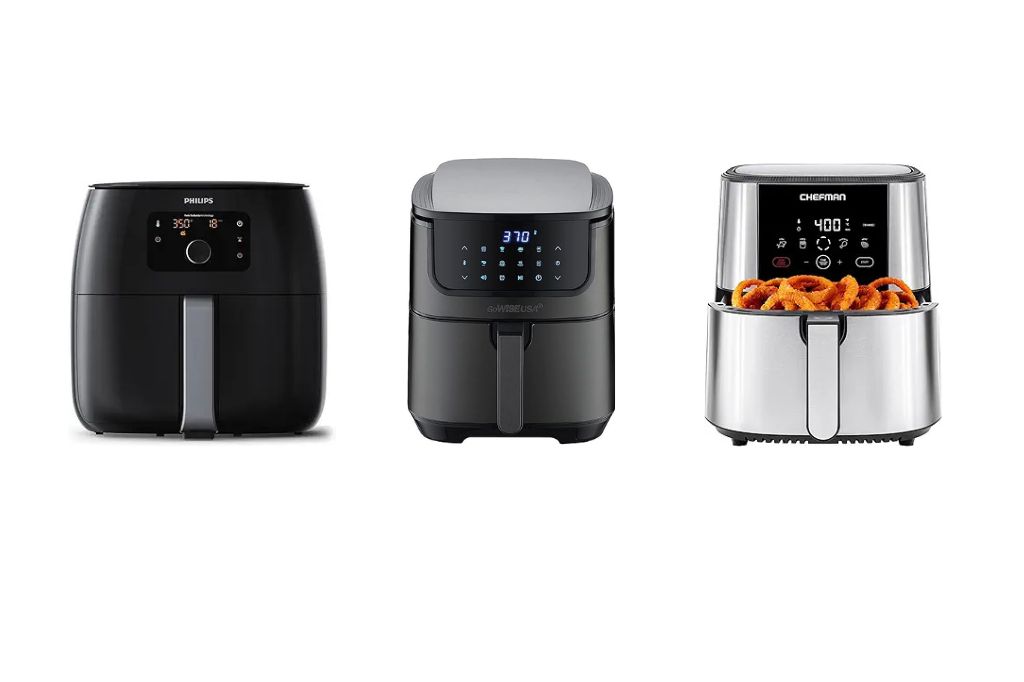If you’re new to air frying or just picked up some parchment paper from the store, you might be wondering: “Can I safely use parchment paper in my air fryer?” The short answer is yes, but there are some important guidelines to follow to ensure safe and effective cooking. Let’s dive into everything you need to know about using parchment paper in air fryer!
Air fryers have revolutionized home cooking, offering a healthier way to achieve that crispy texture we all love. However, with great convenience comes the need for proper safety practices. Understanding how to use parchment paper correctly can make your air frying experience even better while keeping your kitchen safe.
Related: Best Air Fryer Liners
Understanding Air Fryer Parchment Paper
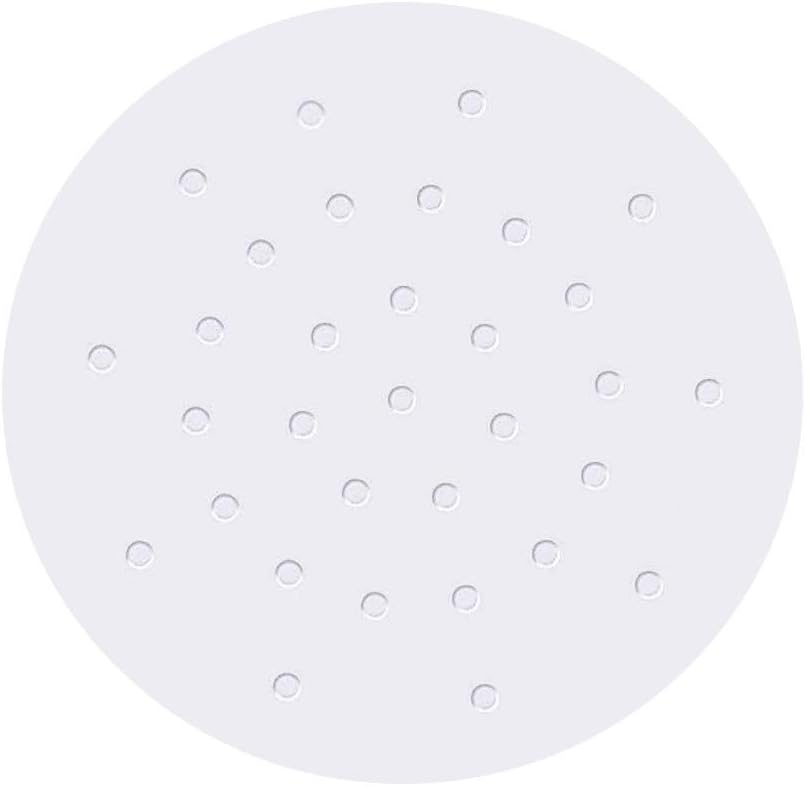
The Basics of Parchment Paper
Regular parchment paper is designed for oven use and typically withstands temperatures up to 420-450°F (215-232°C). Air fryers operate by circulating hot air rapidly around food, creating convection currents that cook food evenly and create that coveted crispy exterior.
When it comes to air fryers, you’ll want to use perforated parchment paper specifically designed for this appliance. These pre-cut sheets have small holes that allow proper air circulation while still providing a non-stick surface for your food.
Why Use Parchment Paper in Air Fryer?
Using parchment paper in your air fryer offers several compelling benefits:
Easy Cleanup: Nobody enjoys scrubbing stuck-on food from their air fryer basket. Parchment paper creates a barrier that makes cleanup virtually effortless.
Food Protection: Delicate items like fish fillets or breaded foods won’t stick to the basket or break apart when you try to remove them.
Flavor Preservation: The paper helps prevent your food from absorbing any lingering flavors from previous cooking sessions.
Basket Longevity: Regular use of parchment paper can help preserve your air fryer basket’s non-stick coating, extending its lifespan.
Safety Guidelines: The Do’s and Don’ts
Essential Safety Rules
Always Preheat First: Never place parchment paper in an empty air fryer during preheating. The rapid air circulation can cause the paper to fly around and potentially touch the heating element, creating a fire hazard.
Weight It Down: Always place food on top of the parchment paper before starting your air fryer. The weight of the food keeps the paper in place and prevents it from moving around during cooking.
Check Temperature Limits: Most air fryer parchment papers are rated for temperatures up to 428°F (220°C). Always verify that your cooking temperature falls within this range.
Use Proper Size: The parchment paper should fit comfortably in your basket without hanging over the edges or blocking air vents. Trim it to size if necessary.
What NOT to Do
Don’t Use Regular Parchment: While regular parchment paper might seem like a good alternative, it’s not perforated and can significantly impede air circulation, leading to uneven cooking.
Avoid Wax Paper: This is crucial! Wax paper has a much lower heat tolerance and the wax coating can melt or even catch fire in an air fryer’s high-heat environment.
Don’t Block Air Vents: Ensure your parchment paper doesn’t cover the air intake or exhaust vents in your air fryer basket.
Step-by-Step Guide to Using Parchment Paper
Getting Started
- Choose the Right Paper
- Purchase perforated parchment paper designed for air fryers
- Check the temperature rating on the package
- Ensure the size matches your air fryer basket
- Prepare Your Air Fryer
- Preheat your air fryer to the desired temperature
- Do this WITHOUT the parchment paper inside
- Allow 2-3 minutes for proper preheating
- Place the Paper Correctly
- Once preheated, carefully place the parchment paper in the basket
- Ensure it lies flat and doesn’t curl up at the edges
- Make sure holes in the paper align with the basket’s ventilation
During Cooking
Monitor Initially: For your first few uses, check on your food a bit more frequently to ensure the paper is staying in place and not browning excessively.
Avoid Opening Frequently: While it’s tempting to check on your food, frequent opening can disrupt air circulation and potentially disturb the parchment paper.
Watch for Browning: Some browning of the parchment paper is normal, but if it starts to darken significantly, you may need to reduce your temperature or cooking time.
Choosing the Right Parchment Paper
Air Fryer-Specific Options
The market now offers parchment papers specifically designed for air fryers. These products typically feature:
- Pre-cut sizes for popular air fryer models
- Optimal perforation patterns for proper air circulation
- Higher temperature resistance suitable for air frying
- Food-grade materials that won’t affect taste
DIY Perforations
If you can’t find pre-perforated parchment paper, you can create your own by using a hole punch or skewer to add holes to regular parchment paper. Space holes about 1-2 inches apart in a grid pattern. However, be aware that this method requires more effort and may not achieve the optimal hole placement of commercial products.
Best Foods to Cook with Parchment Paper
Ideal Candidates
Breaded Items: Chicken tenders, fish sticks, and breaded vegetables benefit greatly from parchment paper, as it prevents the breading from sticking to the basket.
Delicate Fish: Salmon, cod, and other flaky fish cook beautifully on parchment paper without falling apart.
Small Items: Foods like diced vegetables, shrimp, or small pieces that might fall through the basket holes are perfect for parchment paper cooking.
Marinated Foods: Items with sticky marinades or sauces won’t create a cleanup nightmare when cooked on parchment paper.
Foods That Don’t Need Parchment
Some foods work perfectly fine without parchment paper and may actually cook better without it:
- Whole vegetables like potatoes or Brussels sprouts
- Thick cuts of meat that won’t stick easily
- Foods you want maximum crispiness on, as direct contact with the basket can enhance browning
Troubleshooting Common Issues
Paper Flying Around
Problem: Parchment paper moves around during cooking, potentially touching heating elements.
Solution: Always ensure food is placed on the paper before starting. If you’re cooking very light items, consider using a small amount of oil to help them adhere to the paper.
Uneven Cooking
Problem: Food isn’t cooking evenly when using parchment paper.
Solution: Check that your parchment paper has adequate perforations and isn’t blocking air circulation. You may need to flip food more frequently or adjust cooking times.
Paper Browning Too Much
Problem: The parchment paper is turning very dark or starting to burn.
Solution: Reduce your cooking temperature by 10-15 degrees and monitor more closely. Some browning is normal, but excessive darkening indicates the temperature is too high.
Temperature and Timing Considerations
Adjusting Your Cooking
When using parchment paper, you might need to make slight adjustments to your usual cooking routine:
Temperature: Some cooks find they need to increase temperature by 5-10 degrees to compensate for the slight barrier the paper creates.
Time: Cooking times generally remain the same, but keep an eye on your food, especially during your first few attempts.
Flipping: You may need to flip food items more frequently to ensure even browning on both sides.
Temperature Limits
Most air fryer parchment papers are rated for temperatures up to 428°F (220°C). This covers the vast majority of air fryer cooking, but always check your specific product’s ratings. For higher-temperature cooking, consider alternatives like silicone mats designed for air fryers.
Alternatives to Parchment Paper
Silicone Air Fryer Liners
Reusable silicone liners offer many of the same benefits as parchment paper with the added advantage of being environmentally friendly and economical in the long run. They’re perforated for proper air circulation and can withstand higher temperatures than parchment paper.
Aluminum Foil
While aluminum foil can be used in air fryers, it requires even more caution than parchment paper. It must be weighted down securely and should never block air circulation vents. Foil can also react with acidic foods, so it’s not suitable for all recipes.
Direct Cooking
Sometimes the best option is no liner at all. Modern air fryer baskets have excellent non-stick coatings, and many foods release easily with just a light spray of cooking oil.
Environmental and Cost Considerations
Disposable vs. Reusable Options
Parchment Paper: While convenient, disposable parchment paper creates waste and ongoing costs. However, it’s compostable in many municipal programs, making it more environmentally friendly than some alternatives.
Silicone Liners: Though they require a higher upfront investment, silicone liners can be used hundreds of times, making them more economical and environmentally friendly in the long run.
Making the Right Choice
Consider your cooking frequency, environmental priorities, and budget when choosing between disposable and reusable options. For occasional air fryer users, parchment paper might be perfectly adequate. For daily users, investing in quality silicone liners often makes more sense.
Expert Tips for Success
Professional Recommendations
Start Conservative: Begin with lower temperatures and shorter cooking times when first using parchment paper, then adjust as needed.
Quality Matters: Invest in high-quality, air fryer-specific parchment paper. The small additional cost is worth it for better performance and safety.
Keep Records: Note which foods work best with parchment paper and any adjustments you made to temperature or timing.
Advanced Techniques
Parchment Packets: Create sealed parchment packets for steaming vegetables or delicate fish. This technique works beautifully in air fryers and keeps foods moist while still allowing for some crisping.
Custom Sizing: Cut parchment paper to different sizes for different cooking needs. Smaller pieces work well for appetizers, while larger sheets are perfect for family-sized portions.
Maintenance and Storage
Proper Storage
Store your air fryer parchment paper in a cool, dry place away from heat sources. A kitchen drawer or pantry shelf works perfectly. Keep the paper flat to prevent curling, which can make it harder to use.
When to Replace
While parchment paper is single-use, silicone liners should be replaced when they show signs of wear, cracking, or permanent staining that affects their non-stick properties.
The Bottom Line
Using parchment paper in your air fryer can significantly improve your cooking experience when done correctly. The key is following safety guidelines, choosing the right type of paper, and understanding how it affects your cooking process. With proper technique, parchment paper becomes a valuable tool that makes air frying even more convenient and enjoyable.
Remember that cooking is all about experimentation and finding what works best for your specific needs and preferences. Start with these guidelines, but don’t be afraid to adjust based on your results. Your air fryer, combined with the right parchment paper technique, can help you create delicious, crispy foods with minimal cleanup and maximum convenience.
Need More Air Fryer Tips?
Check out manufacturer resources like Ninja Kitchen’s air fryer guide or Cosori’s cooking tips for model-specific advice and recipe inspiration!
Pro Tip: Always keep a stack of properly sized parchment paper sheets ready to go – it makes weeknight cooking so much more convenient! 🍳
